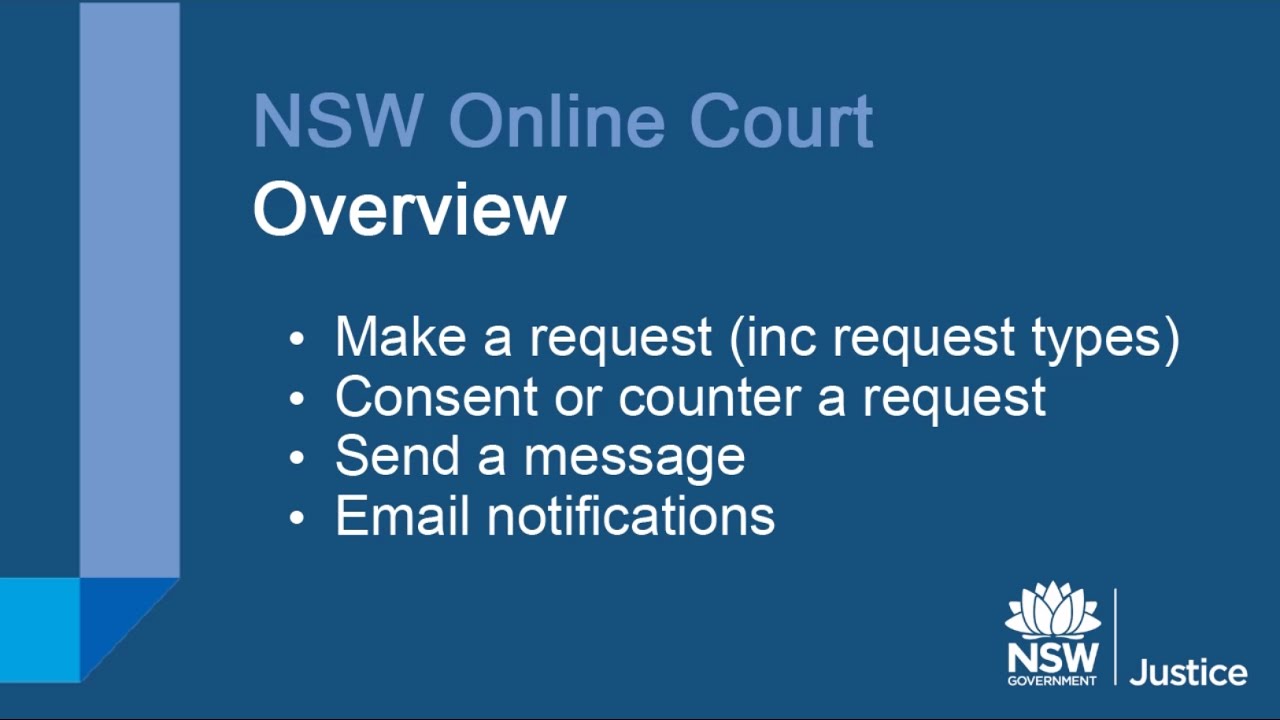About Online Court
Online Court is a digital service introduced by the NSW Justice Department, which enables legal practitioners and registrars to manage and process preliminary orders (call-overs) without having to enter the courtroom.
The service is aimed at preventing you and your clients from wasting valuable time at court, waiting for your matter to be heard, as well as the travel costs associated with appearing in person.
Originally launched to incorporate the Sydney Local Court, General Division Call-over list, Online Court is being gradually extended to other lists. Once a matter is available in the relevant list, you can proceed with your cases online, just as you would in court. You can also message the Registrar, and all your dealings will be transparent to all parties, and recorded in the Online Court Record for your case.
Refer to the User Guide for the Online Court.
User Guide for Online Court (for Self-represented litigants), Local Court
How to use Online Court
To start using Online Court, you'll need to be a registered user of the Online Registry. Each court operates its own practice note or protocol for the use of Online Court. Click on the links below to view procedures for each court.
- The Supreme Court published an Online Court Protocol that applies to its Corporations List.
- The Supreme Court published an Online Court Protocol that applies to its Equity General List.
- The Supreme Court published an Online Court Protocol that applies to is Possessions List.
- The Land and Environment Court has published its Online Court practices on its website.
- The District Court has published its Online Court practices that applies to its General List (Civil) – Sydney only on its website.
- The Local Court Practice Note Civ 1 details its application in civil proceedings.
Conduct in the Online Court
Online Court is a virtual courtroom and you should conduct yourself and use language in the Online Court as you would during an in-person court appearance.
For more details on the types of requests you can make or cut-off times, visit the help page for the jurisdictions listed below. Or you can Search FAQs.
